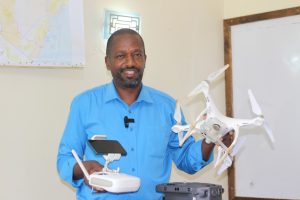Earthquake in Kenya: Last night on Tuesday, July 16, 2024, residents within and outside Nairobi city reported feeling heavy earth tremors, causing a wave of concern and curiosity across the city. This sudden tremor caught many off guard, leading to a mix of fear and humour in the reactions from the public.
According to Earthquakes Monitor and other global seismic tracking sites, a “seismic-like event” with a magnitude of 4.7 was detected near Nairobi. This event, occurring at a shallow depth of 10 km, was closer to the surface and thus likely felt more strongly than deeper quakes. In addition, Based on initial information, the earthquake was probably felt by many people near the epicenter. It likely didn’t cause major damage, but items may have fallen off shelves, and windows might have broken.
Earthquake in Kenya Reactions
Reactions on social media were swift and varied. Several users on X (formerly Twitter) expressed their anxiety and shared their immediate thoughts during the tremor. Notably, Some admitted to feeling as though the world was ending, prompting them to consider repentance and turning to faith, albeit briefly due to the quake’s quick duration. While, Others interpreted the tremor as a sign, suggesting it was a message for the current government to heed the will of the people. These interpretations, while varied, highlighted the deep connection between natural events and the social and political climate of the time.
Understanding Earthquakes and Tremors
An earthquake, or earth tremor, is the shaking of the earth’s surface caused by a sudden release of energy in the lithosphere, which generates seismic waves. The primary difference between an earthquake and a tremor lies in the intensity of the shaking. Earthquakes can vary greatly in intensity. Some are so weak they go unnoticed, while others are powerful enough to cause significant damage, propelling objects and people into the air, damaging critical infrastructure, and devastating entire cities. In contrast, earth tremors are generally less intense and often do not cause noticeable damage.
Kenya, particularly Nairobi, has not been known for significant seismic activity, making these recent events notable. The county also experienced an earth tremor in June 2024. On Wednesday, June 5 at approximately 1:21 p.m., residents in and around Nairobi, experienced an unconfirmed seismic event. The recurrence of these tremors in a short span has sparked discussions among residents and experts about the region’s seismic activity and preparedness.
What Causes Earthquakes and Tremors?
Earthquakes are caused by the movement of tectonic plates beneath the Earth’s surface. These plates are constantly moving, and when they grind against each other or collide, the energy that accumulates is released in the form of seismic waves, resulting in an earthquake. The intensity and impact of an earthquake depend on various factors. Including, the depth of the quake, the geological characteristics of the region, and the proximity to populated areas.
Earth tremors, while also caused by the movement of tectonic plates, are typically less intense. They might be the result of smaller, less significant movements or shifts in the earth’s crust. Like, the earthquake in Kenya. In Addition, some cases, human activities such as mining, reservoir-induced seismicity, or geothermal drilling can also cause tremors.
What to Do After an Earthquake
Expect aftershocks:
Hours, days, or even weeks after the main quake, aftershocks can occur. These can cause additional building damage and falling debris that could injure you.
Avoid open flames in damaged buildings:
Earthquakes can damage gas lines, so don’t use lighters or matches.
Stay away from the coast:
If you live near the coast, avoid the beach as earthquakes can cause dangerous tsunamis and flooding.
Drive carefully and plan alternative routes:
Structural damage and traffic light outages may make it difficult to get to your destination.
The recent earthquake in Nairobi has been a wake-up call for many. It highlights the importance of understanding and preparing for such natural events. While, the tremor caused minimal damage, the reactions and concerns it raised among the residents underscore the need for awareness and readiness in the face of seismic activities.
Official reports of new earthquakes may be delayed, so staying informed through reliable sources such as the U.S. Geological Survey and ready.gov is crucial. In summary, The night of July 16, 2024, will be remembered not just for the tremor itself, but for the collective experience of a city momentarily united by the shaking ground beneath their feet.





